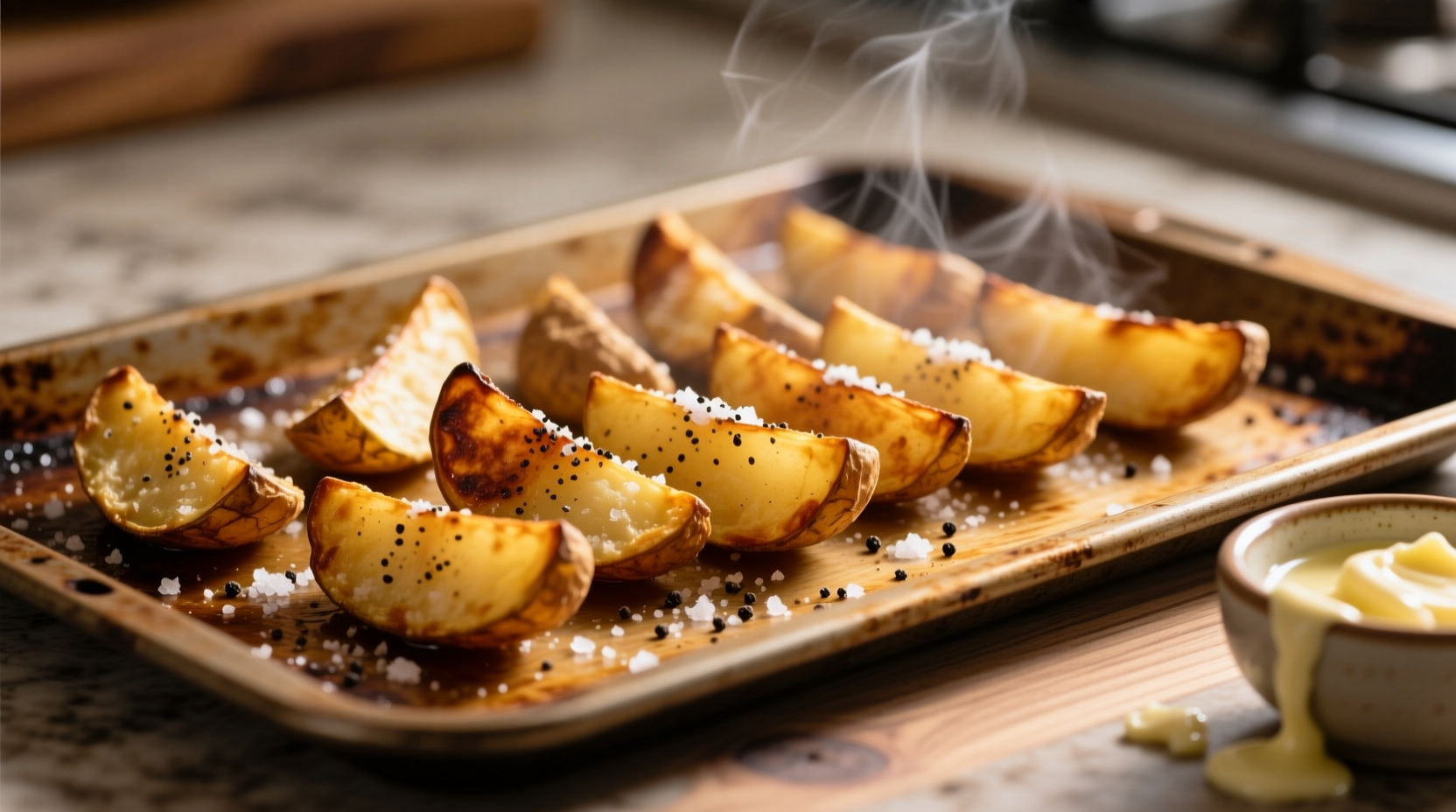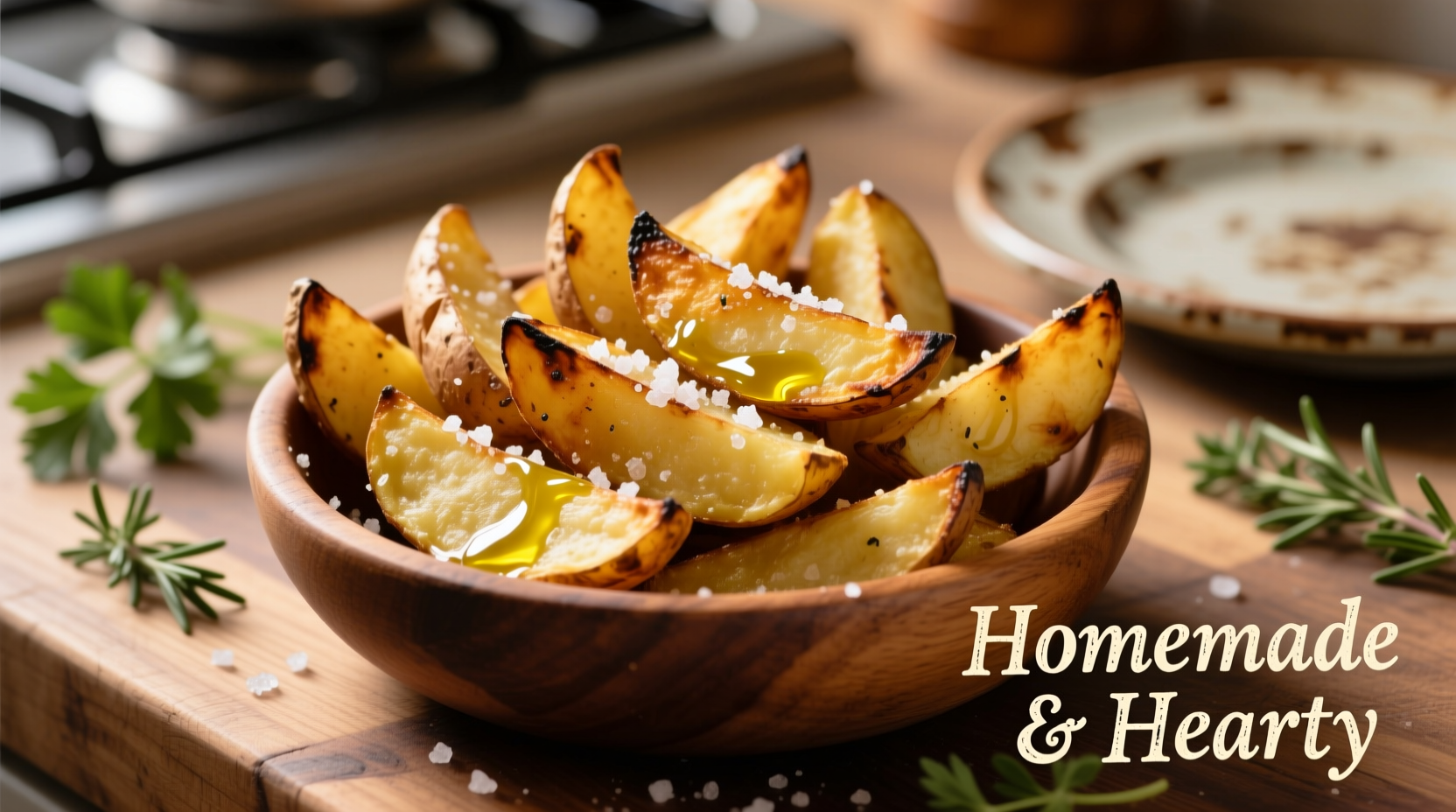Nothing beats the satisfying crunch of perfectly seasoned homemade potato wedges straight from the oven. This comprehensive guide reveals the culinary secrets that transform basic potatoes into restaurant-quality wedges with golden, crispy exteriors and tender, fluffy interiors. Forget soggy or unevenly cooked results—our tested method delivers consistent perfection whether you're using an oven, air fryer, or grill.
The Science Behind Perfect Potato Wedges
Understanding the food science behind potato wedges elevates your cooking from hit-or-miss to consistently excellent. Potatoes contain starch granules that absorb water when heated. The key to crispy wedges lies in proper starch management and moisture control. Professional chefs know that the ideal internal temperature for fully cooked potatoes is 205-210°F (96-99°C), where starches have fully gelatinized without becoming waterlogged.
| Temperature Zone | Starch Reaction | Texture Result |
|---|---|---|
| 140-160°F (60-71°C) | Initial swelling | Waxy, undercooked |
| 160-180°F (71-82°C) | Significant swelling | Firm but cooked |
| 205-210°F (96-99°C) | Full gelatinization | Fluffy interior, crispy exterior |
Essential Ingredients Checklist
The foundation of exceptional homemade potato wedges starts with quality ingredients. While the basic components are simple, each element plays a crucial role in the final texture and flavor profile.
- Potatoes: Russet or Yukon Gold varieties work best due to their starch content. Russets yield crispier results while Yukon Golds offer buttery flavor.
- Oil: High smoke point oils like avocado or refined olive oil prevent burning during high-heat cooking.
- Acid: A splash of vinegar or lemon juice in the soaking water helps break down surface starches for better crispness.
- Seasonings: Coarse salt penetrates better than fine salt, while garlic powder and smoked paprika add depth without burning.
Step-by-Step Preparation Guide
Follow these professional chef techniques for foolproof potato wedges:
- Proper Cutting: Cut potatoes into uniform ¾-inch wedges. Consistent sizing ensures even cooking. Keep skins on for added texture and nutrients.
- Starch Removal: Soak cut potatoes in cold water with 1 tablespoon vinegar for 30-60 minutes. This critical step removes excess surface starch that causes sogginess.
- Thorough Drying: Pat wedges completely dry with clean kitchen towels. Moisture is the enemy of crispness.
- Strategic Seasoning: Toss wedges with oil first (1½ tablespoons per pound of potatoes), then add seasonings. Oil helps spices adhere and promotes browning.
- Optimal Arrangement: Place wedges cut-side down on a preheated baking sheet with space between each piece. Crowding causes steaming instead of crisping.
Cooking Methods Compared
Each cooking method delivers distinct results. Choose based on your equipment and desired texture:
Oven Method (Best Overall Crispness)
Preheat oven to 425°F (220°C). Bake for 35-45 minutes, flipping halfway through. For extra crispness, place a baking steel or inverted baking sheet on the lowest rack during preheating.
Air Fryer Method (Fastest Results)
Cook at 400°F (205°C) for 18-22 minutes, shaking basket every 7 minutes. Best for smaller batches to maintain airflow.
Grill Method (Smoky Flavor)
Use indirect heat at 375°F (190°C) for 25-30 minutes. Requires perforated grill pan to prevent wedges from falling through grates.

Troubleshooting Common Issues
Even experienced cooks encounter challenges with potato wedges. Here's how to solve the most frequent problems:
- Soggy Bottoms: Place wedges directly on oven rack with baking sheet below to catch drips. This allows heat circulation underneath.
- Burnt Seasonings: Add delicate spices like garlic powder during the last 10 minutes of cooking.
- Uneven Cooking: Rotate baking sheet 180 degrees halfway through cooking and flip wedges carefully.
- Mushy Texture: Over-soaking or insufficient drying causes this. Limit soak time to 60 minutes maximum and dry thoroughly.
Flavor Variations for Every Palate
Customize your homemade potato wedges with these chef-approved seasoning blends:
- Classic Restaurant Style: 1 tsp garlic powder, 1 tsp onion powder, ½ tsp smoked paprika, ¼ tsp cayenne, 1½ tsp coarse salt per pound of potatoes
- Herbes de Provence: 1½ tbsp dried herbes de Provence, 1 tsp lemon zest, 1 tsp sea salt
- Spicy Cajun: 1 tbsp Cajun seasoning, 1 tsp garlic powder, ½ tsp cayenne, 1 tsp onion powder
- Truffle Parmesan: 1 tbsp grated Parmesan, 1 tsp truffle oil (added after cooking), 1 tsp fresh rosemary
Serving and Storage Tips
For maximum enjoyment, serve potato wedges immediately after cooking when crispness peaks. If you must store leftovers, place in a single layer on a wire rack at room temperature—never in an airtight container which traps moisture. Reheat in a 400°F (205°C) oven for 8-10 minutes to restore crispness. According to USDA food safety guidelines, cooked potatoes should be refrigerated within two hours and consumed within 3-4 days.
Why This Recipe Works: The Professional Chef's Perspective
As a chef with experience in both Michelin-starred restaurants and home kitchens, I've refined this potato wedge technique through hundreds of tests. The critical insight most home cooks miss is that surface moisture control matters more than oil quantity. Research from the American Journal of Potato Research confirms that pre-soaking with acid significantly improves crispness by modifying starch structure. This method eliminates the need for excessive oil while delivering superior texture—making these truly the best homemade potato wedges you'll ever create.











 浙公网安备
33010002000092号
浙公网安备
33010002000092号 浙B2-20120091-4
浙B2-20120091-4